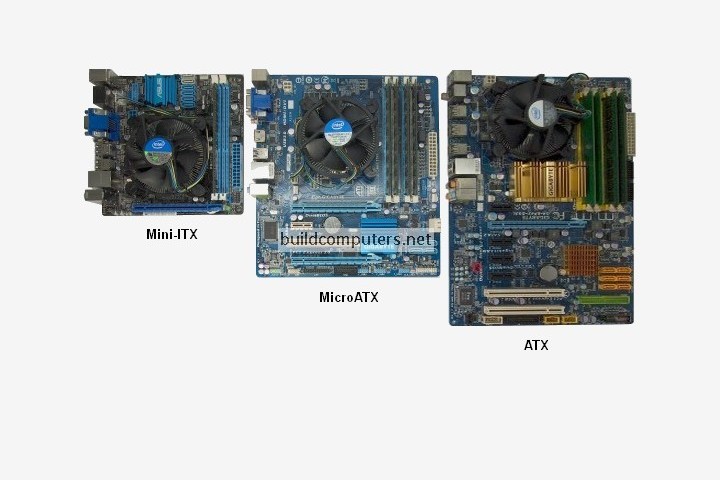The types of motherboards exist
in different forms and with various connectors for peripherals. To lower
costs by allowing interchangeability between motherboards, manufacturers have
been defining several standards that group recommendations on their size and
the layout of the elements on them.
The motherboard, motherboard, motherboard or
board, in English motherboard, mainboard, is a printed circuit card to which
the other parts of the computer are connected. It has a series of
integrated circuits installed, among which is the chipset, which serves as a
connection center between the processor, RAM memory, expansion buses and other
devices.
It is installed inside a box that is usually
made of sheet metal and has a panel to connect external devices and many
internal connectors and sockets to install components inside the box.
The motherboard also includes software called
BIOS, which allows it to perform basic functionality such as device testing,
video and keyboard operation, device recognition, and operating system loading
.
types
of motherboards
One of the characteristics of base plates is
their shape. Depending on its shape, it will include some connectors or
others and some holes located in certain places to be adapted to the box.
Even so, there are defined a series of
standards that seek to reduce costs and allow computing devices to be exchanged
between different boards. These standards define the size and arrangement
of elements on base plates.
The
most common types of plates
1.XT
It is the format of the motherboard of the
IBM PC model 5160, released in 1983. In this form factor, a size exactly equal
to that of a letter-size sheet of paper and a single external connector for the
keyboard were defined.
- 1984 AT 305×305mm
(IBM).
- Baby AT: 216 × 330mm.
2.AT
One of the largest formats in the entire
history of the PC (305 × 279–330 mm), it defined a power connector made up of
two parts. It was used extensively from 1985 to 1995. Due to its large
size it made it difficult to
insert disk drives , and it handled 2 connectors
from the source to the motherboard indicated
by the black cables, which led to a possible connection error.
- 1995 ATX 305×244mm (Intel)
- MicroATX: 244 × 244mm
- FlexATX: 229 × 191mm
- MiniATX: 284 × 208mm
3.ATX
Advanced Technology Extended
Introduced in 1995 they have a size of
305x244mm. They include a type of connector to the Power Supply with 24
(20+4) contacts (pins) that allow a single way of connection and another
additional connector called P4, with 4 contacts. Some of the advantages of
this type of plates are:
- Integration of the I/O
ports on the motherboard itself.
- The 90º rotation of
the previous formats.
- The processor is in
parallel with the memory slots.
- AGP, PCI, PCI-e slots
are located horizontally with the processor.
- It has better cooling.
4.MicroATX
The maximum size of a microATX board is 244mm
× 244mm, initially designed to be compatible with ATX boards. MicroATX
boards usually have three expansion
ports for five ATX.
To avoid
occupying ports and saving space in the case, microATX boards include some
components (such as the graphics card) integrated into the motherboard itself,
which makes it easy to use in small equipment such as multimedia centers.
5.ITX
With features from Intel's microATX and
FlexATX specifications, VIA's design focuses on the integration of the largest
possible number of components on the motherboard, in addition to the inclusion
of graphics hardware in the computer's own chipset, making it unnecessary to
install a graphics card in the AGP slot.
- 2005 [BTX] 325 × 267mm
(Intel)
- Micro bTX: 264 × 267mm
- PicoBTX: 203 × 267mm
- RegularBTX: 325 ×
267mm
6.
BTX Balanced Technology Extended
Introduced in 2004, they present an evolution
over ATX motherboards. CPUs and graphics cards consume more and more
power, which causes more heat to be given off. ATX boards were not
designed for these levels of heat, which caused some errors to be generated.
For this reason, the appearance of another type of plate was
necessary , in this case, the BTX plates. Even though the form factors of
ATX and BTX boards are incompatible with each other, the power supply can be
the same by using the same connector. There are several factors derived
from BTX, such as the microBTX (264x266mm) and the picoBTX (203x266mm).
7.DTX
DTX motherboards have a number of advantages
that help reduce production costs. They were designed to fit seamlessly
into a conventional ATX chassis. The DTX spec is slightly larger (200mm x
244mm) than the miniATX form factor, but includes two expansion slots that can either
be PCI or PCI-Express. DTX boards use a 24-pin power connector and an
additional 2x2 connector.
- With the size of a
normal board, up to four DTX boards could be built.
- DTX motherboards can
be manufactured in four layers of cabling reducing the cost of motherboard
production.
Motherboard
Components
The motherboard is made up of a printed
circuit on which the
devices that make up the computer are connected. The components that
connect to a motherboard are usually similar, regardless of what type of form
factor it is.


